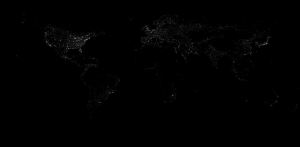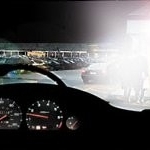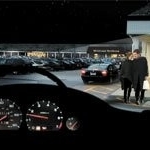Lighting
By Craig DiLouie, LC
What you need to know:
- Nighttime lighting provides many benefits, but not all outdoor lighting is responsibly designed
- Skyglow is light emitted up into the sky, obscuring a view of the stars
- Light trespass is light emitted onto other properties, irritating neighbors
- Glare is excessive brightness produced by outdoor lighting equipment
- Lighting equipment is available that minimizes uplight, backlight and glare
- A Model Lighting Ordinance is available to local governments interested in implementing practical, uniform laws promoting responsible outdoor lighting
Outdoor lighting provides safety and security, beautification of urban landscapes, advertising via illuminated signage, and enables a wide range of nighttime activities, from driving a car to watching a live baseball game.
Unfortunately, not all outdoor lighting is designed responsibly, resulting in problems such as skyglow, light trespass and glare. “Light pollution” was a term coined by the astronomy community to describe what is better known as skyglow, or light produced by outdoor lighting that spills up into the sky, obscuring the nighttime view of the stars. Banding together as the International Dark-Sky Association (IDA), astronomers and other supporters have promoted legislation protecting dark skies.

The earth at night. Photo by National Aeronautics and Space Administration.
Click to enlarge.
While the general term may be a misnomer, they have a point. According to astronomers, about three-fourths of the glow we see in the night sky is the result of electric lighting. It’s estimated that 30% of the energy used for outdoor lighting, in fact, ends up flying into outer space—some $1.5 billion per year, according to the IDA. Thanks to skyglow, about nine out of 10 Americans do not have a clear view of the night sky, while half lack any view of the stars.
Another problem is light trespass, which occurs when light produced on one property falls on another, creating a nuisance. Light trespass has been the main driver behind more than 10,000 lighting ordinances passed by local governments in North America.
The lighting industry has pointed out yet another problem that normally escapes notice—direct glare, or excessive brightness that irritates or even disables vision, from outdoor luminaires (light fixtures). Glare is common in poorly designed outdoor lighting systems that equate higher brightness with higher visibility.


Glare is common in outdoor lighting systems designed by those who confuse higher brightness with higher visibility. Unfortunately, instead of increasing visibility, glare can irritate or even disable vision. Photos by International Dark-Sky Association.
All these problems are often tied together. And if you solve one, you usually solve one or both of the other problems.
Manufacturers have responded to growing demand for responsible outdoor lighting with luminaires that use lower-wattage lamps (light bulbs) and optics that produce no uplight (which reduces skyglow), control backlight (which reduces light trespass) and minimize glare. For lighting near the perimeter of a property, a sharp-cutoff, forward-throw luminaire can be a good solution. When decorative area or landscape lighting is used, consider luminaires that minimize uplight.
To help local governments produce lighting laws that are largely uniform, practical to implement, and promote energy-efficient, responsible outdoor lighting, the Illuminating Engineering Society (IES) and the IDA produced a Model Lighting Ordinance (MLO) as a code-ready template for municipalities. The MLO covers all outdoor lighting applications and is customizable based on land use, with some exceptions for temporary lighting, emergency lighting, and public monument and statuary lighting.